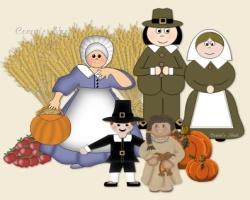Seattle school officials are telling teachers that Thanksgiving actually is a time of “mourning” because it represents “500 years of betrayal.” The message to all “staff” in the Seattle Public Schools comes from Caprice D. Hollins, director of Equity, Race & Learning Support, and other officials, including Willard Bill Jr. of the Office of Native American Education.
“With so many holidays approaching, we want to again remind you that Thanksgiving can be a particularly difficult time for many of our Native students,” the letter said.
The school letter refers educators to a website run by an outside organization that promotes Indian culture and recommends teachers explore it.
“Here you will discover ways to help you and your students think critically, and find resources where you can learn about Thanksgiving from a Native American perspective,” the letter said. “Eleven myths are identified about Thanksgiving, take a look at No. 11 and begin your own deconstruction.”
The website’s “Myth No. 11” is that “Thanksgiving is a happy time.”
“Fact: For many Indian people, ‘Thanksgiving’ is a time of mourning, of remembering how a gift of generosity was rewarded by theft of land and seed corn, extermination of many from disease and gun, and near total destruction of many more from forced assimilation. As currently celebrated in this country, ‘Thanksgiving’ is a bitter reminder of 500 years of betrayal returned for friendship,” the website describes.
The website posting called “Deconstructing the Myths of ‘The First Thanksgiving,” goes further. The writing by Judy Dow and Beverly Slapin also speculates on the psychology of Thanksgiving.
“What is it about the story of ‘The First Thanksgiving’ that makes it essential to be taught in virtually every grade from preschool through high school? What is it about the story that is so seductive? Why has it become an annual elementary school tradition to hold Thanksgiving pageants, with young children dressing up in paper-bag costumes and feather-duster headdresses and marching around the schoolyard? Why is it seen as necessary for fake ‘pilgrims’ and fake ‘Indians’ (portrayed by real children, many of whom are Indian) to sit down every year to a fake feast, acting out fake scenarios and reciting fake dialogue about friendship? And why do teachers all over the country continue (for the most part, unknowingly) to perpetuate this myth year after year after year?” the two write.
“Is it because as Americans we have a deep need to believe that the soil we live on and the country on which it is based was founded on integrity and cooperation? This belief would help contradict any feelings of guilt that could haunt us when we look at our role in more recent history in dealing with other indigenous peoples in other countries. If we dare to give up the ‘myth’ we may have to take responsibility for our actions both concerning indigenous peoples of this land as well as those brought to this land in violation of everything that makes us human,” the two said.
“In terms of what they were seeing in some of the use of the feathers and those things because those are of spiritual and ceremonial significance to us,” Bill, the school district official, told KING5 Television in Seattle.
The political correctness of such evaluations and recommendations goes too far, others said.
“I think anything you are thankful for is great,” parent D.D. Boutwell told the station.
“I think it gets to be silly,” said parent Deb Bush.
“We need to free ourselves so that we can manifest that true love and kindness and compassion that’s necessary to heal the wounds,” Phil Lane Jr., of the United Indians of All Tribes Foundation, told the station.
The district, as part of its website guidelines, suggests being careful about “celebrating” a “tradition,” rather than “educating.”




